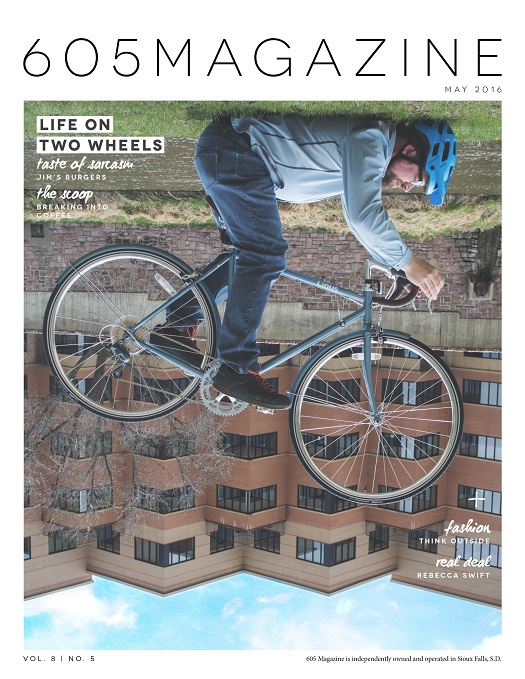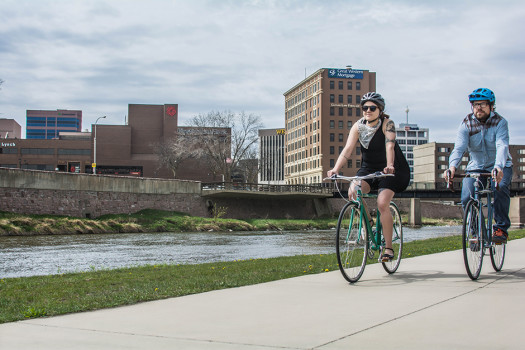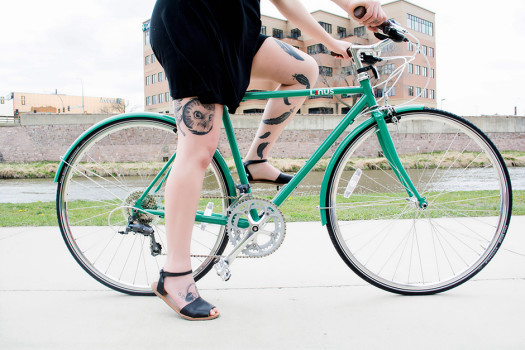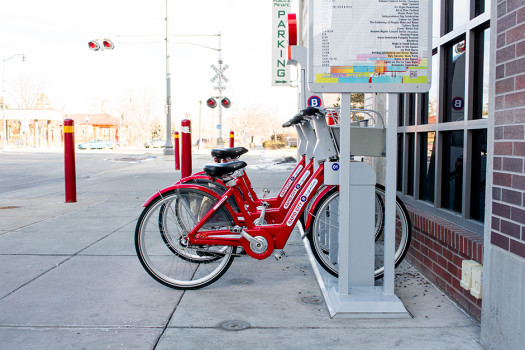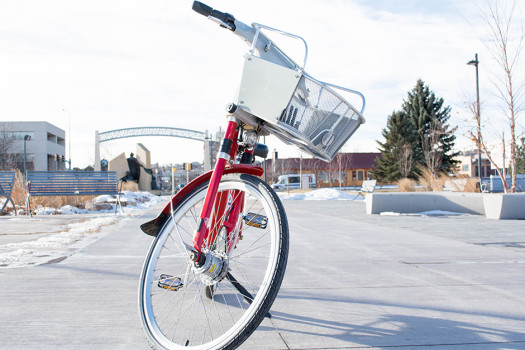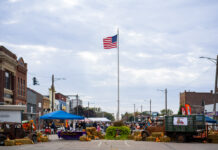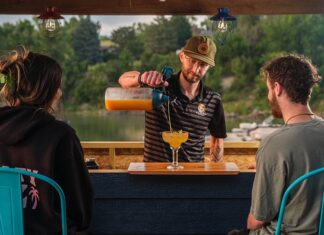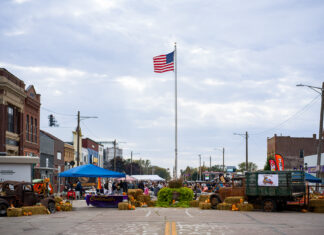By Denise DePaolo
Images by Elizabeth Lucille Photography
There is no more productive form of muscle-powered travel than cycling. A 2012 article on popularmechanics.com cites the example of a cyclist versus a pedestrian, pointing out that if the two use the same amount of energy to travel a distance, the cyclist would travel three-times as fast, while the walker would expend six-times the metabolic energy. Basically, riding our bikes is hella efficient, and in South Dakota’s two largest cities, there’s never been a better time to be on two wheels.
Chad Pickard, owner of Sioux Falls-based Spoke-N-Sport, says that although the state remains deeply entrenched as a car culture, a great deal of progress has been made to accommodate bicyclists. A big part of that is the completion of Sioux Falls’ bike trail in recent years, and city leaders’ decision to view it as a legitimate route for daily transportation.
“For Sioux Falls it’s awesome, because it’s a facility people can get on and not have to worry about traffic,” he explained. “There’s relatively no stop signs on the bike trail. Most of it is wide enough to navigate easily and feel secure with your bike handling skills. I know a lot of people who live on the west side, but work on the east side and as they travel across the city, they jump on the bike trail for a portion. I used to live east of town and I’d jump on the bike trail to come into work, and I loved that part of the ride in the morning, because there’s no car traffic.”
Kamp Kirsch, a partner and manager at Two Wheeler Dealer, says his decision to move to Sioux Falls four years ago was influenced by the presence of a strong year-round bike culture.
“It was small four years ago, but it’s certainly grown,” said Kirsch. “I’ve seen a lot of people getting into fat bikes and winter riding. That’s really cool. That’s not super common in the country right now, so the fact that it’s happening here means people have a different mindset towards biking. It gets cold and super windy. It’s not always fun to ride your bike here. In fact, a lot of times it’s not, so seeing people out there doing that every day is really cool to see.”
Although the city has been awarded a bronze ranking as a “Bike Friendly Community” by The League of American Bicyclists, both Pickard and Kirsch admit the city isn’t perfect when it comes to cyclists and motorists coexisting. Pickard believes education is key, starting in elementary school. He fondly remembers bike rodeos and other events centered around bike safety. For his kids, that hasn’t been part of their school experience, and he thinks that’s a missed opportunity. Another component, he says, is awareness on the part of drivers. It can be as simple as looking in the rear view mirror before opening a car door, or taking an extra few seconds before pulling out onto a roadway.
“Vehicle traffic is not looking for a cyclist moving ten miles per hour,” Pickard explained. They’re looking for walking traffic moving two or three miles an hour. And reality is a cyclist is probably going to be moving closer to 15 miles per hour or faster, just because a bike is a very efficient mode of transportation.”
Kirsch has been impressed with the efforts of groups like Falls Area Bicyclists (FAB), which push for increased education, visibility, and overall safety. But, he says, there is still room for improvement.
“Cyclists have a right to be on the road and a lot of people don’t get that. They think that we should be on the sidewalk, which isn’t necessarily any more safe than the road. And the ‘three foot, six foot’ law that’s currently in place, I feel like people have been following that, but not all the time. Just that extra couple feet of space is going to save a ton of lives,” Kirsch said, in reference to a state law passed last year making three feet the minimum for passing on roads with speed limits under 35 miles per hour, and six feet on roads over 35.”
On the other side of the state, bike advocates are working to make Rapid City more bike friendly as well. One big change has been the addition of South Dakota’s first B-cycle stations. They make it possible to check out a bike for $5 over a 24-hour period (or $65 for a full year of rentals, which includes B-cycle stations in other cities).
Read the full article in the May issue of 605 Magazine or click here.


